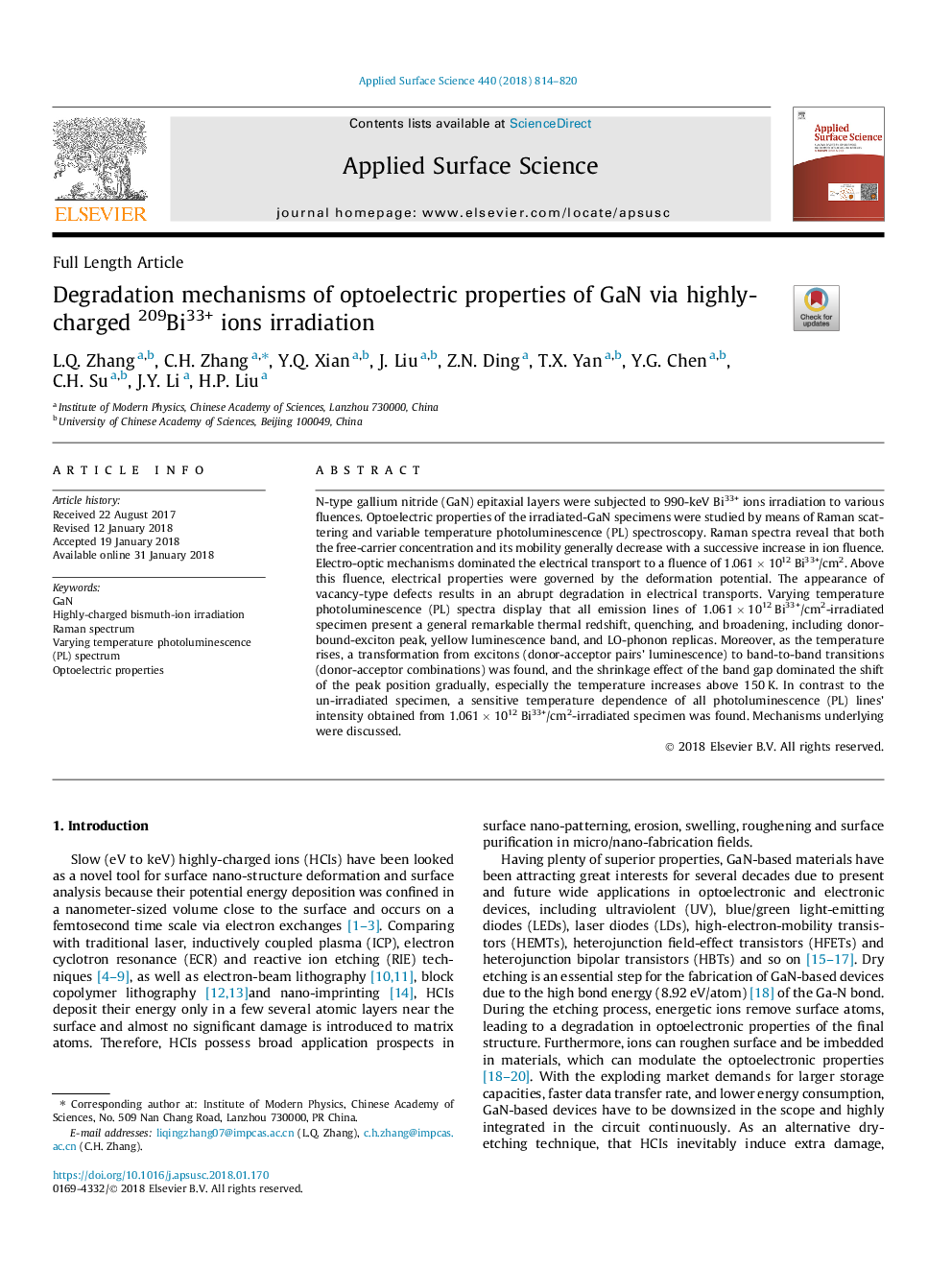| Article ID | Journal | Published Year | Pages | File Type |
|---|---|---|---|---|
| 7835461 | Applied Surface Science | 2018 | 7 Pages |
Abstract
N-type gallium nitride (GaN) epitaxial layers were subjected to 990-keV Bi33+ ions irradiation to various fluences. Optoelectric properties of the irradiated-GaN specimens were studied by means of Raman scattering and variable temperature photoluminescence (PL) spectroscopy. Raman spectra reveal that both the free-carrier concentration and its mobility generally decrease with a successive increase in ion fluence. Electro-optic mechanisms dominated the electrical transport to a fluence of 1.061â¯Ãâ¯1012â¯Bi33+/cm2. Above this fluence, electrical properties were governed by the deformation potential. The appearance of vacancy-type defects results in an abrupt degradation in electrical transports. Varying temperature photoluminescence (PL) spectra display that all emission lines of 1.061â¯Ãâ¯1012â¯Bi33+/cm2-irradiated specimen present a general remarkable thermal redshift, quenching, and broadening, including donor-bound-exciton peak, yellow luminescence band, and LO-phonon replicas. Moreover, as the temperature rises, a transformation from excitons (donor-acceptor pairs' luminescence) to band-to-band transitions (donor-acceptor combinations) was found, and the shrinkage effect of the band gap dominated the shift of the peak position gradually, especially the temperature increases above 150â¯K. In contrast to the un-irradiated specimen, a sensitive temperature dependence of all photoluminescence (PL) lines' intensity obtained from 1.061â¯Ãâ¯1012â¯Bi33+/cm2-irradiated specimen was found. Mechanisms underlying were discussed.
Keywords
Related Topics
Physical Sciences and Engineering
Chemistry
Physical and Theoretical Chemistry
Authors
L.Q. Zhang, C.H. Zhang, Y.Q. Xian, J. Liu, Z.N. Ding, T.X. Yan, Y.G. Chen, C.H. Su, J.Y. Li, H.P. Liu,
